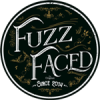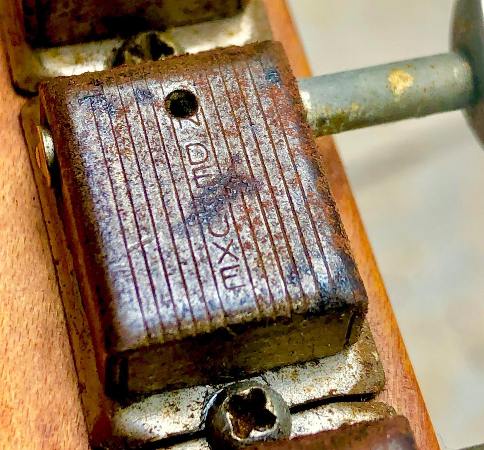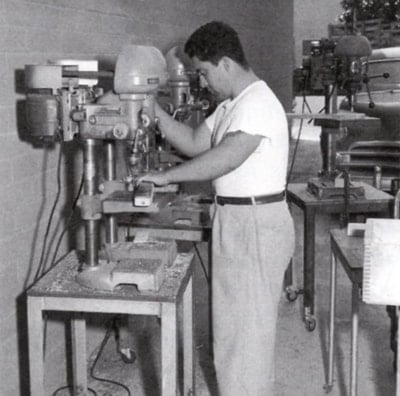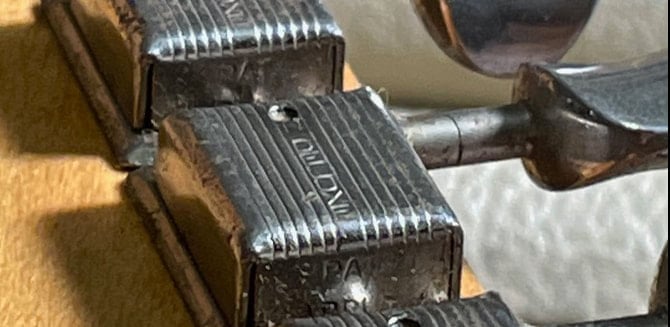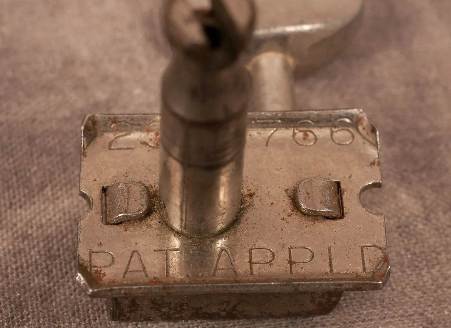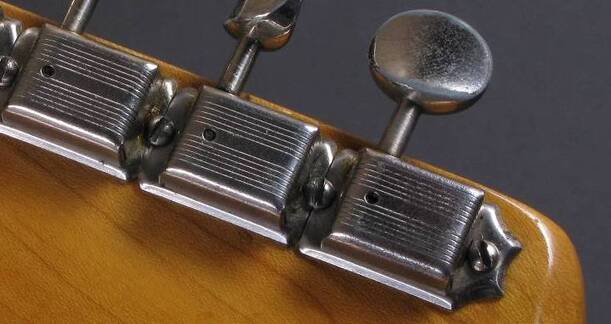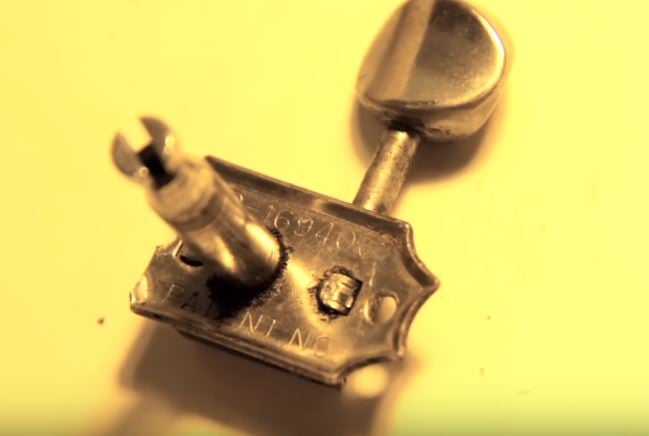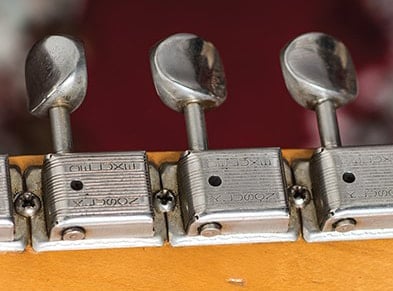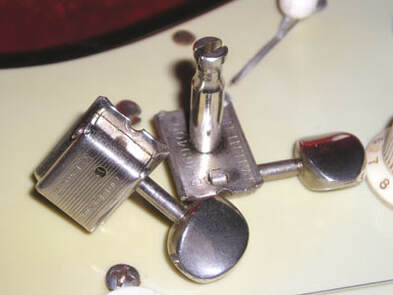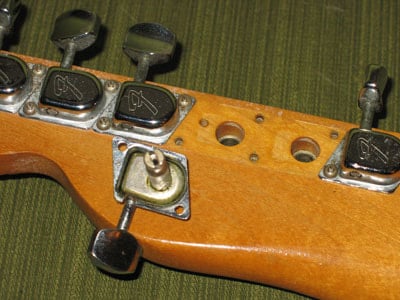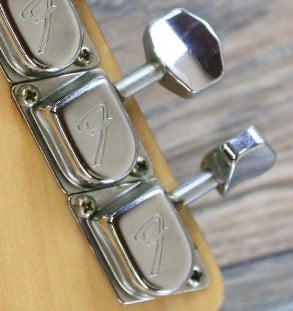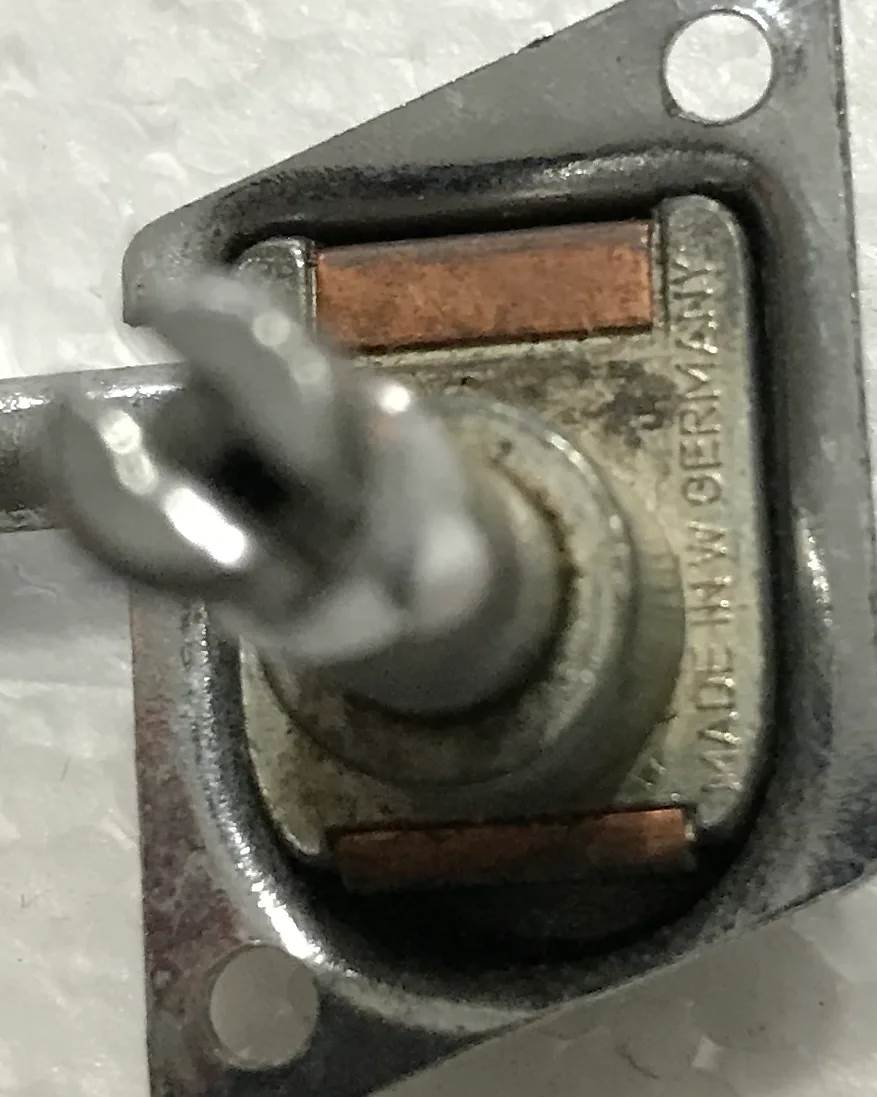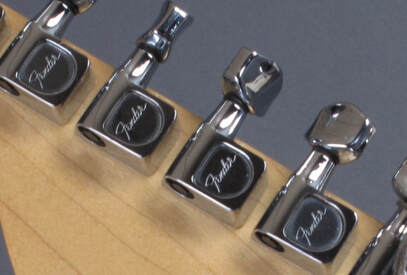KLUSON TUNING MACHINES
|
Until 1967 all Esquires, Broadcasters and Telecasters were equipped with tuning machines made by Kluson Manufacturing Co. from Chicago.
Earliest prototypes were fitted with four-on-a-side Kluson tuners, cut from the strip, with plastic buttons. They featured a closed shell and a solid shaft, and the words “PAT.APPLD” were stamped on the side and bottom. In early 1950 Fender started using the metal-button closed shell tuners. This change was probably driven by raw material shortage supplies during the Korean war. Once production took, Fender started purchasing 12 string sets of tuner stripes (six-per-bass side). They had to trim the ends off of the metal cover so they would fit on the six-in-a-row headstock and left one end on the cover that they used for the first and sixth keys. |
The ends of the covers were trimmed with the use of Race & Olmsted dies that were mounted on a small punch press. These tuners were characterized by their split shaft with a well for the string end and an oval-shaped metal button.
Cosmetically speaking, four slightly different types of shell were used on production models.
Cosmetically speaking, four slightly different types of shell were used on production models.
- Until mid-1951, the words “KLUSON DELUXE” were stamped in a single line on the back-shell, like 1956 and later Klusons. They are easily identified as early Klusons because the words “PAT.APPLD” were also stamped on one side, below the vertical “Deluxe” marking. Moreover, the early Kluson tuners featured a closed shell, without a protruding shaft. The bottom side of the shell was stamped with “2356766 PAT.APPLD”.
- No-line Kluson tuning machines, used between mid-51 and 1957, didn’t feature any brand stamp on the shell, but the bottom side of the shell still showed the “2356766 PAT.APPLD” marking.
A first issue characterized by a closed shell was used until the end of 1952. A second issue of No-line Kluson tuners, that featured a side tuner shaft worm gear hole, first appeared in 1952.
- Between mid-1956 and early 1965, the keys were again stamped with “KLUSON DELUXE” in a single line on the outer shell, whilst the bottom side sported a “PAT.APPLD D-169400” marking, replaced during 1958 by a “PATENT NO D-169400” stamp. They were also different from the first single line Kluson tuners because they were characterized by a side tuner shaft worm gear hole.
- The double line Kluson tuners, which first appeared in mid-1964, had the words “KLUSON DELUXE” stamped twice in two lines across the shell and “PATENT NO D-164900” on the bottom side.
The snakehead prototype came without tuner bushings. The second prototype, pre-production and most pre-1951 guitars featured flatter bushings sourced from Kluson. 1951 and later models came with round top bushings machined by Edmiston from small rod of cold rolled steel.
The original Kluson tuning machines can be distinguished from some reproductions by their “DELUXE” marking, which was entirely stamped on the outer shell, whilst some reproductions featured the second “E” wrapped around to the side. The position of the hole of the lubricant can be also different.
The original Kluson tuning machines can be distinguished from some reproductions by their “DELUXE” marking, which was entirely stamped on the outer shell, whilst some reproductions featured the second “E” wrapped around to the side. The position of the hole of the lubricant can be also different.
FENDER KEYS
When CBS bought Fender, one of the first things Don Randall wanted to do was to make their own tuning machines, thus avoiding buying the Klusons. Forrest White stated in his book that he had the idea of the design of new keys that would be mounted easily on the six-in-a-row headstock with the use of two screws.
According to Forrest, Fender bought West German gear-hobbing machines to make the gears for the keys they wanted to make. The gear-hobbing machines were set up in Race and Olmsted’s Tolls & Die shop, which made the parts for Fender because the machines had to be operated by trained machinists, and Fender didn’t have employees with that particular skill. Forrest also claimed that Schaller, the German company, copied his design in making some of their keys.
Regardless of how things went, Kluson tuners were gradually discontinued and replaced by the so-called Fender keys in the course of 1967, characterized by an octagonal chrome-plated plastic button and the “F” (for Fender) marking stamped on the back of the cover.
These tuning machines were slightly modified over time. At first they were characterized by a side tuner shaft worm gear hole, but since circa 1975 they gradually switched to a closed shell, without a protruding shaft. Although designed in Fullerton, the gear inside the shell of the Fender keys second issue was stamped with “MADE IN W. GERMANY”.
Fender used this type of key on most Telecasters until 1983.
According to Forrest, Fender bought West German gear-hobbing machines to make the gears for the keys they wanted to make. The gear-hobbing machines were set up in Race and Olmsted’s Tolls & Die shop, which made the parts for Fender because the machines had to be operated by trained machinists, and Fender didn’t have employees with that particular skill. Forrest also claimed that Schaller, the German company, copied his design in making some of their keys.
Regardless of how things went, Kluson tuners were gradually discontinued and replaced by the so-called Fender keys in the course of 1967, characterized by an octagonal chrome-plated plastic button and the “F” (for Fender) marking stamped on the back of the cover.
These tuning machines were slightly modified over time. At first they were characterized by a side tuner shaft worm gear hole, but since circa 1975 they gradually switched to a closed shell, without a protruding shaft. Although designed in Fullerton, the gear inside the shell of the Fender keys second issue was stamped with “MADE IN W. GERMANY”.
Fender used this type of key on most Telecasters until 1983.
Additional Notes
In 1973, one-piece die-cast Deluxe Schaller keys were adopted by the Telecaster Deluxe. These keys had a closed shell and were characterized by a Fender logo stamped on the back.
A slightly different version of Deluxe Schaller keys was later used on the Elite and Standard Telecasters released in 1983.
They featured a pearloid button on the Walnut and Gold Elite models.
A slightly different version of Deluxe Schaller keys was later used on the Elite and Standard Telecasters released in 1983.
They featured a pearloid button on the Walnut and Gold Elite models.
Since the Kluson company went out of business, the ’52 Vintage Telecaster was fitted with Kluson-style replicas made by the Japanese Gotoh company. Kluson brand was purchased in 1993 by Larry Davis of WD Music Products.
